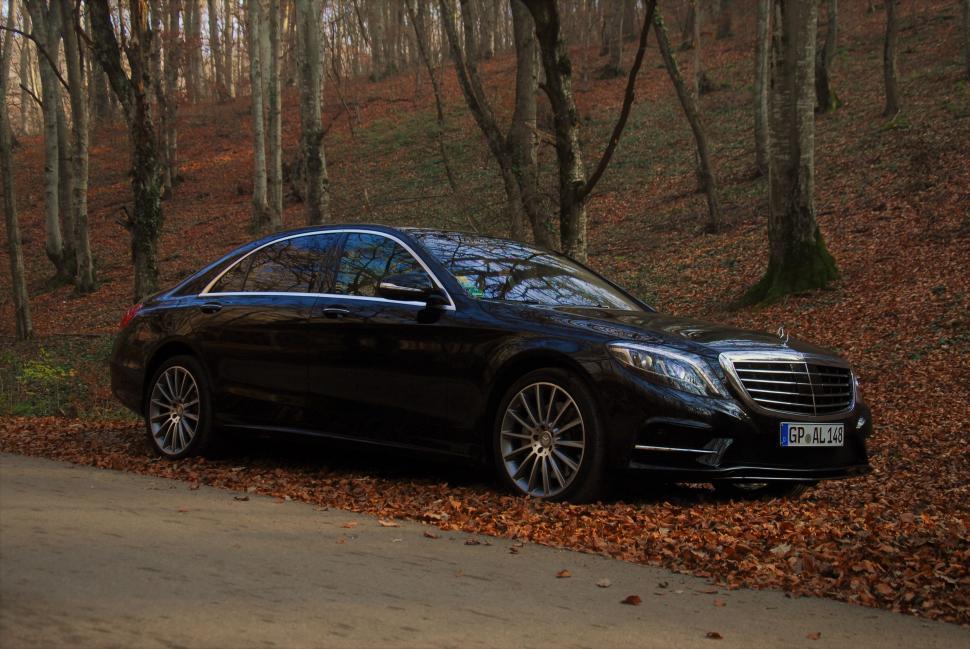Navigating the landscape of modern adulthood is like trying to piece together a puzzle, but someone misplaced the corner pieces, and the picture on the box has long faded. While our parents might have waxed nostalgic about the ease of acquiring life’s milestones, for today’s generation, many of those accomplishments seem like distant mirages. So, what exactly could your parents afford that now seems like a series of fever dreams? Let’s dive into this checklist of bygone affluence.
1. Buying A Home In Your Twenties

Remember those sepia-toned family photos featuring your parents in front of their very first home, purchased well before their thirtieth birthday? That dream has drifted further from reality for the modern young adult. According to a report by the Urban Institute, millennials are renting longer and buying later, often due to wages that haven’t kept pace with the soaring cost of real estate. The affordability gap is growing wider, making first-time homeownership seem like winning the lottery rather than a rite of passage.
Today’s twenty-somethings face the daunting trifecta of skyrocketing student loan debts, stagnant wages, and housing markets that could make even a seasoned bidder weep. While their predecessors may have scraped by with modest down payments, today’s buyers find themselves navigating a minefield of bidding wars and ever-increasing interest rates. The American dream, once a charming starter home with a picket fence, is now more akin to a high-stakes poker game. The stakes are high, and the buy-in is beyond the reach of many.
2. Raising Kids On One Income

There was a time when the phrase “stay-at-home parent” didn’t evoke images of wealth or privilege, but rather a common family structure. Back then, one income could comfortably cover a family’s expenses, including vacations, school supplies, and even saving for college. Now, raising children on a single salary is either a Utopian ideal or an arithmetical impossibility for many families navigating today’s economy.
As wages stagnate and living costs rise, many families rely heavily on dual incomes just to break even. The luxury of one parent choosing to stay home full-time to raise children has become an exceptional feat, often accompanied by significant sacrifices. For many, the economics of modern family life dictate that both parents work, reshaping the traditional family dynamic. Choices once taken for granted now require strategic planning and financial juggling.
3. Pursuing Higher Education Without Crushing Debt

Once upon a time, attending college was a straightforward path to upward mobility, not a debt sentence. Today, the average tuition has ballooned to astronomical figures, leaving graduates shackled with loans that follow them well into their working years. According to the College Board, inflation-adjusted tuition rates have more than tripled since the early 1980s, creating financial burdens previously unimaginable. This shift has transformed the pursuit of knowledge into a financial albatross many are reluctant to bear.
The narrative surrounding higher education has taken a grim turn, with the cost-benefit analysis leaning ever more unfavorable. While a degree still unlocks opportunities, the financial aftermath often feels like an insurmountable climb. The pressures of student debt dictate career paths and life choices, forcing many to question if the investment is worth the price. Meanwhile, the dream of exploring academia purely for the love of learning becomes increasingly elusive.
4. Planning For A Comfortable Retirement

Once upon a time, retirement planning was simpler: work diligently, save consistently, and retire comfortably. Today, the once straightforward path to a serene golden age demands a savvy financial strategy and often, a bit of luck. With pensions nearly extinct and Social Security’s future in question, the prospect of a secure retirement seems more like a leap of faith than a guarantee.
Today’s young professionals are acutely aware that they’ll need to save more, for a longer period, and still face uncertainties about healthcare costs and longevity. The magic of compound interest, once a reliable ally, now needs bolstering from savvy investments and multiple income streams. The expectation of a comfortable retirement has turned into a quest that requires dedication and financial literacy. The horizon may still be attainable, but the road to get there has been undeniably extended.
5. Taking Family Vacations Without Financial Angst

Vacations used to be annual sojourns that families looked forward to, rather than Herculean logistical challenges requiring months of meticulous financial planning. Back in the day, a family road trip or a week at the beach was a staple, not a splurge. A survey from Allianz Travel Insurance revealed that nearly half of Americans have curtailed travel plans due to financial constraints, underscoring the growing gap between aspiration and reality. Family vacations have shifted from being a routine getaway to a luxury many can’t justify.
The expenses associated with travel have ballooned, and the discretionary income required for such endeavors is harder to come by. Rising travel costs, combined with economic uncertainty, make the idea of whisking the family away feel indulgent, even reckless. For many, the choice to travel requires sacrificing other wants or needs, turning what was once a beloved tradition into a rare treat. As a result, passports gather dust, and travel dreams are deferred indefinitely.
6. Owning A Car Without Stress

Once a symbol of freedom and independence, owning a car today often comes with a side of financial angst. Previously, cars were affordable enough that a modest income could easily cover payments, insurance, and maintenance. Today, the cost of vehicles, coupled with sky-high insurance premiums and fluctuating gas prices, has transformed car ownership into a budgetary black hole.
The allure of the open road persists, but the reality of high monthly payments and unexpected repair costs dampens the romance. Many now think twice before signing on the dotted line, wondering if public transportation or ride-sharing might better suit their financial road map. The freedom and status once associated with owning a set of wheels are now tinged with caution and practicality. It’s a paradigm shift that fundamentally alters the joy of driving.
7. Going To The Doctor Without Worrying About The Bill

Healthcare, a necessity rather than a luxury, has become a source of anxiety rather than assurance. Decades ago, visiting the doctor was a straightforward affair, with predictable costs and insurance that covered most expenses. Dr. Atul Gawande, in an article for The New Yorker, highlights the complex tapestry of modern healthcare costs that leave many feeling vulnerable. The financial gymnastics required to manage co-pays, deductibles, and unexpected expenses can be overwhelming.
This modern narrative forces many to weigh their health against their bank balance, leading to delayed treatments and neglected prescriptions. The psychological burden of healthcare costs adds yet another layer of stress to already hectic lives. The luxury of putting well-being first has been replaced by the necessity of financial triage. Navigating the healthcare system now requires not only a symptom tracker but a budget calculator.
8. Balancing Work And Life

Work-life balance once seemed achievable, a harmonious blend of productivity and personal time. Today, it feels more like a mythical creature, often spoken of but rarely seen. The digital age, with its constant connectivity, blurs the lines between office hours and personal life, leaving many perpetually on call. The quest for balance now requires deliberate boundaries and unapologetic prioritizing.
The pressure to excel professionally while nurturing a fulfilling personal life stretches many too thin. Achieving a semblance of balance demands strategic planning and sometimes, sacrificing career ambitions. The erosion of clear boundaries challenges mental health and relationships, confronting modern workers with tough choices. Finding equilibrium becomes a proactive pursuit, an ongoing negotiation with oneself.
9. Taking College For A Job Guarantee

A college degree was once a golden ticket to a promising career and stable income. While still valuable, today’s graduates find themselves in a job market where degrees are mere entry tickets rather than guaranteed pathways to success. The economic landscape has shifted, demanding additional skills, experiences, and sometimes, just plain luck. The saturation of degree-holders has diluted its impact, requiring graduates to differentiate themselves incessantly.
Understanding the new rules of the job market game becomes essential, blending education with skill-building and networking. This reality forces graduates to continuously adapt and expand their credentials, often investing more time and money along the way. The once straightforward career trajectory has become a labyrinth of possibilities and pitfalls. The degree’s value remains, but the journey post-graduation is a complex odyssey.
10. Engaging In Personal Hobbies

Hobbies once provided a much-needed escape and personal enrichment outside the hustle and bustle of daily obligations. Today, time constraints and financial pressures often reduce personal hobbies to indulgences rather than essential elements of wellbeing. As work demands increase, leisure time dwindles, leaving little room for creative pursuits and self-discovery. The art of balancing passion with practicality is increasingly challenging.
The financial aspect of maintaining hobbies can also be a deterrent, as equipment costs and membership fees add up. This shift has led many to abandon hobbies altogether, focusing instead on more “productive” activities. The loss of personal enrichment contributes to a life that feels perpetually one-dimensional. The richness of a well-rounded life is often sacrificed on the altar of necessity and economy.
11. Investing In The Stock Market

Once a pursuit for the financially savvy or industrious, investing in the stock market now feels like an intimidating gamble for many young adults. The complexity and volatility of modern markets, coupled with the burden of student debt and limited disposable income, make the prospect daunting. Back then, stocks were tangible and growth felt predictable, providing a sense of security for long-term financial planning. Today’s rapidly changing economic climate demands a deeper understanding and a higher risk tolerance.
The democratization of investing through apps and online platforms has opened doors but also presents risks. Navigating these waters requires financial literacy and emotional resilience amid market fluctuations. The romance of early investment success stories is countered by the reality of potential losses. The decision to invest becomes a calculated risk rather than an assured strategy for wealth building.
12. Getting Married Without Breaking The Bank

Weddings, once intimate gatherings, have transformed into lavish productions that can cost as much as a small house. The pressure to create a picture-perfect day has ballooned budgets, leaving many couples with significant debt before even cutting the cake. While previous generations enjoyed simpler affairs, modern couples face expectations driven by social media and industry standards. The dream day comes with a hefty price tag, often leading to financial strain.
Couples navigate a minefield of choices, from venues to guest lists, each decision impacting the final bill. The industry thrives on upselling, turning every component into a must-have feature. The romantic notion of marriage is often overshadowed by financial reality, requiring couples to carefully weigh the significance of each choice. Love remains the focus, but practicality often dictates the terms.
13. Wearing Designer Clothes

The allure of high fashion has long captivated the imagination, but the price of designer pieces has soared to unattainable heights for many. Once, designer labels were an achievable indulgence, well within the reach of a middle-class budget. Today, the cost of a single designer item can rival a month’s rent, making ownership a distant dream for most. The desire for quality and craftsmanship clashes with the constraints of a modern budget.
Fashion enthusiasts are forced to seek alternatives, like thrifting, renting, or purchasing knock-offs. The democratization of fashion through fast brands offers temporary satisfaction but lacks the longevity and uniqueness of high-end pieces. The experience of owning a designer garment is increasingly reserved for special occasions or those with disposable income. The high fashion world remains alluring but increasingly exclusive.
14. Enjoying Regular Dining Out

Dining out was once a staple of social life, an accessible way to enjoy different cuisines and a break from home cooking. Fast forward to today, and a night out at a favorite restaurant feels more like a luxury than a convenience. Rising food and labor costs have driven menu prices up, and for many, dining out now requires justification rather than spontaneity. The simple pleasure has become a wallet-conscious decision.
Many households now reserve dining out for special occasions, opting to cook at home more frequently to save money. The social dynamics of shared meals and culinary exploration have shifted, with budgetary constraints dictating social calendars. While the joy of dining out remains, it’s tempered by financial considerations that alter the frequency and spontaneity of the experience. The cost of a meal no longer justifies the ease and enjoyment it once did.
This article is for informational purposes only and should not be construed as financial advice. Consult a financial professional before making investment or other financial decisions. The author and publisher make no warranties of any kind.








